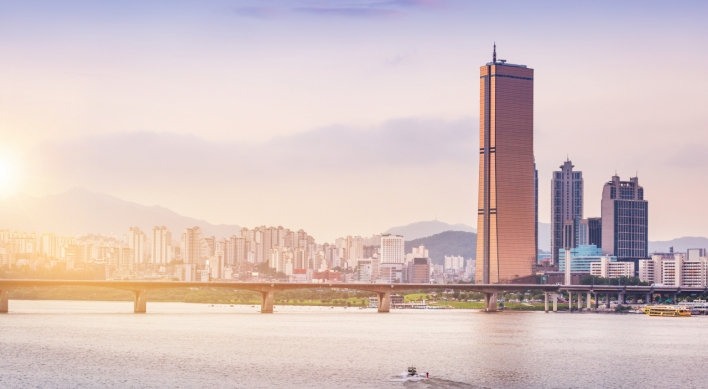[Pankaj Mishra] The socialist push behind India’s capitalist rise
ByPublished : Sept. 27, 2011 - 19:54
Twenty years ago, India faced a fiscal crisis caused by profligate public spending and rising oil prices after the first Persian Gulf War. There was a risk it would default on its international payments.
The finance minister, an English-educated Sikh economist named Manmohan Singh, responded to an almost unmanageable situation by liberalizing trade and industrial policies.
So India entered a bright world of market-driven capitalism after years of socialist darkness, and was set on its current path of almost 8 percent annual growth in gross domestic product.
Or so the story goes. Like all historical watersheds, India’s economic liberalization in 1991 has generated its own share of heroes and myths. Few books or articles in the mainstream press about Indian politics and economy in the past two decades have been judicious with their praise for Manmohan Singh, the apparent slayer of India’s socialist fantasies, the prophet of free-market logic, and for the past seven years prime minister of India.
But things are never so simple, and for Singh they have gotten vastly more complicated in recent years.
Singh, a technocrat in the style of former Brazilian President Fernando Henrique Cardoso and former Thai Prime Minister Thaksin Shinawatra, has no base of his own in Indian politics. He really serves at the pleasure of Sonia Gandhi, the leader of the Congress Party. Uncharismatic and a poor communicator, he was always a slightly incongruous icon of the bold New India.
The elites of Davos nevertheless love him. Pakistani President Asif Ali Zardari called him “the architect of modern India,” while the writer Fareed Zakaria said he was “a man of immense intelligence, unimpeachable integrity, and deep experience.”
Yet in less than a year, Singh, tainted by a series of corruption scandals and fiascos ― the latest being the arrest of the anticorruption campaigner Anna Hazare ― has seen his domestic popularity collapse.
The myths about Manmohan Singh lie shattered. However, cliches about the Indian economy continue to proliferate, conveniently summarized by a recent book review in the Wall Street Journal: “The roots of continued poverty lie in four decades of socialism, not in two decades of half-hearted capitalism that, for all its flaws, has lifted more Indians out of poverty than any other force in history.”
Wisdom about India doesn’t get more conventional than this. But is it true?
Ideologues of the right as well as the left have a fondness for sharp polarities: socialism versus capitalism, free markets versus the state. They also like clean historical breaks: In 1991, a glorious new era of revolutionary growth and development began ― that sort of thing.
But as the case of India reveals, historical periods aren’t so neatly divided, and ideological prejudices, such as those that have distorted the current economic debate in the U.S., are a poor guide to a complex and endlessly dynamic reality. One can’t understand modern India without appreciating its unique socio-economic trajectory in recent decades.
To credit Manmohan Singh for having effected a Superman-like rescue from socialism is to ignore many other factors and long-term causes, many dating back to the first years of India’s independence, such as Jawaharlal Nehru’s investment in heavy industries and technical training.
To give an example of the many variables governing GDP growth: India’s economy expanded by an astonishing 9 percent in 1975 and 1976, thanks to a big increase in savings and investment rates, spurred by the nationalization of banks in the late 1960s and their rapid expansion across India. Poverty rates dropped to less than 40 percent from more than 50 percent, and per-capita incomes rose to unprecedented levels, in India in the 1980s ― long before most Indians had heard of Manmohan Singh.
Growing up in India in the 1970s, I was constantly made aware of the complex interplay of economic systems and ideas. I found it impossible to avoid the quasi-socialist slogans of Indira Gandhi, then prime minister. But I also heard a great deal about the crony capitalism of her son, Sanjay Gandhi, the aggressive trailblazer for such Third World businessmen-scions as Tommy Suharto in Indonesia and Gamal Mubarak in Egypt.
Kaushik Basu, a Cornell University economist and adviser to Singh, is only one of the many respected observers of the Indian economy to refute simple-minded claims that the end of socialism in 1991 was the main cause of subsequent high growth. “India never had socialism,” he asserts.
Nehru was deeply influenced by the worldwide backlash to unregulated capitalism in the 1930s. He spoke of the importance of the state controlling the “commanding heights of the economy.” In actual practice, this meant exercising state control over banking, railways and airlines, and rigorously regulating the private sector. These restrictions on business, which spawned the “license-permit Raj” that so enriched corrupt politicians and officials, were often irrational.
But socialist, India was not. Unlike China, there was always a large private industry, dating from the colonial era, whose manufacturing output exceeded, despite the restrictive regime, that of the public sector.
While ridiculing the notion that India was socialist in any consequential way, the Oxford History of Indian Business claims that there was no “explicit opposition from organized business” to Nehru’s policies because they created “much greater scope for expansion and progress to private enterprise than was possible under the hands-off policy of the colonial regime.”
This assessment is verified by the expansion in the post-1947 era of many long-established business families, such as the Tatas, Birlas, Thapars, Singhanias and Kirloskars, and the emergence and consolidation of many new houses, including Mahindra, Bajaj, Godrej, Ranbaxy and, now most famously, Ambani.
Until 1969, India didn’t even have anti-monopoly legislation of the kind the U.S. has had since the Sherman Antitrust Act. As the Economist magazine noted recently, “Before liberalisation, many Indian firms enjoyed a quiet life in concentrated industries, where a coterie of licensed firms divided the market between them.”
And, as happened under other severely protectionist economic regimes ― such as the U.S. and Germany in the 19th century and South Korea, Japan and Thailand after World War II, nascent industries in India benefited from the lack of international rivals.
Narayan Murthy, the founder of Infosys Ltd. and the poster child of the New India, acknowledges that India’s expulsion of International Business Machines Corp. in 1977 was as crucial to his modest beginnings in 1981 as the liberalization of the Indian economy in 1991.
India’s economy before liberalization suffered from many maladies. While creating a small middle class and lavishing subsidies on the rich peasantry, it did little for the bulk of India’s poor majority. But insisting today that India should have opened up its economy in the 1950s is rather like saying that the U.S. should have lowered its steep tariffs in the 1880s before its manufacturers in the North and farmers in the Midwest were ready for international competition.
Certainly, you need an indifference to history as well as great ideological certainty to insist that India should have embraced global capitalism immediately after it had liberated itself from the successors of the British East India Company.
“Socialist” China has, as the Nobel laureate Amartya Sen has written, consistently fared much better than India in all major human-development indices, despite its many self-inflicted disasters under Mao Zedong. It is far from embracing Western-style capitalism today, and its success seems to prove that having the public sector control the commanding heights of the economy is no bar to economic growth.
Left-wing ideologues might take all this as a reason to mourn India’s half-hearted embrace of socialism. But they would be as blind to India’s unique history and political and socioeconomic conditions as their counterparts on the right, who think that unadulterated capitalism, presently the problem rather than the solution in its American and European heartlands, is the only way forward for India.
By Pankaj Mishra
Pankaj Mishra, the author of “Temptations of the West: How to be Modern in India, Pakistan, Tibet and Beyond,” is a Bloomberg View columnist based in London and Mashobra, India. The opinions expressed are his own. ― Ed.
(Bloomberg)
The finance minister, an English-educated Sikh economist named Manmohan Singh, responded to an almost unmanageable situation by liberalizing trade and industrial policies.
So India entered a bright world of market-driven capitalism after years of socialist darkness, and was set on its current path of almost 8 percent annual growth in gross domestic product.
Or so the story goes. Like all historical watersheds, India’s economic liberalization in 1991 has generated its own share of heroes and myths. Few books or articles in the mainstream press about Indian politics and economy in the past two decades have been judicious with their praise for Manmohan Singh, the apparent slayer of India’s socialist fantasies, the prophet of free-market logic, and for the past seven years prime minister of India.
But things are never so simple, and for Singh they have gotten vastly more complicated in recent years.
Singh, a technocrat in the style of former Brazilian President Fernando Henrique Cardoso and former Thai Prime Minister Thaksin Shinawatra, has no base of his own in Indian politics. He really serves at the pleasure of Sonia Gandhi, the leader of the Congress Party. Uncharismatic and a poor communicator, he was always a slightly incongruous icon of the bold New India.
The elites of Davos nevertheless love him. Pakistani President Asif Ali Zardari called him “the architect of modern India,” while the writer Fareed Zakaria said he was “a man of immense intelligence, unimpeachable integrity, and deep experience.”
Yet in less than a year, Singh, tainted by a series of corruption scandals and fiascos ― the latest being the arrest of the anticorruption campaigner Anna Hazare ― has seen his domestic popularity collapse.
The myths about Manmohan Singh lie shattered. However, cliches about the Indian economy continue to proliferate, conveniently summarized by a recent book review in the Wall Street Journal: “The roots of continued poverty lie in four decades of socialism, not in two decades of half-hearted capitalism that, for all its flaws, has lifted more Indians out of poverty than any other force in history.”
Wisdom about India doesn’t get more conventional than this. But is it true?
Ideologues of the right as well as the left have a fondness for sharp polarities: socialism versus capitalism, free markets versus the state. They also like clean historical breaks: In 1991, a glorious new era of revolutionary growth and development began ― that sort of thing.
But as the case of India reveals, historical periods aren’t so neatly divided, and ideological prejudices, such as those that have distorted the current economic debate in the U.S., are a poor guide to a complex and endlessly dynamic reality. One can’t understand modern India without appreciating its unique socio-economic trajectory in recent decades.
To credit Manmohan Singh for having effected a Superman-like rescue from socialism is to ignore many other factors and long-term causes, many dating back to the first years of India’s independence, such as Jawaharlal Nehru’s investment in heavy industries and technical training.
To give an example of the many variables governing GDP growth: India’s economy expanded by an astonishing 9 percent in 1975 and 1976, thanks to a big increase in savings and investment rates, spurred by the nationalization of banks in the late 1960s and their rapid expansion across India. Poverty rates dropped to less than 40 percent from more than 50 percent, and per-capita incomes rose to unprecedented levels, in India in the 1980s ― long before most Indians had heard of Manmohan Singh.
Growing up in India in the 1970s, I was constantly made aware of the complex interplay of economic systems and ideas. I found it impossible to avoid the quasi-socialist slogans of Indira Gandhi, then prime minister. But I also heard a great deal about the crony capitalism of her son, Sanjay Gandhi, the aggressive trailblazer for such Third World businessmen-scions as Tommy Suharto in Indonesia and Gamal Mubarak in Egypt.
Kaushik Basu, a Cornell University economist and adviser to Singh, is only one of the many respected observers of the Indian economy to refute simple-minded claims that the end of socialism in 1991 was the main cause of subsequent high growth. “India never had socialism,” he asserts.
Nehru was deeply influenced by the worldwide backlash to unregulated capitalism in the 1930s. He spoke of the importance of the state controlling the “commanding heights of the economy.” In actual practice, this meant exercising state control over banking, railways and airlines, and rigorously regulating the private sector. These restrictions on business, which spawned the “license-permit Raj” that so enriched corrupt politicians and officials, were often irrational.
But socialist, India was not. Unlike China, there was always a large private industry, dating from the colonial era, whose manufacturing output exceeded, despite the restrictive regime, that of the public sector.
While ridiculing the notion that India was socialist in any consequential way, the Oxford History of Indian Business claims that there was no “explicit opposition from organized business” to Nehru’s policies because they created “much greater scope for expansion and progress to private enterprise than was possible under the hands-off policy of the colonial regime.”
This assessment is verified by the expansion in the post-1947 era of many long-established business families, such as the Tatas, Birlas, Thapars, Singhanias and Kirloskars, and the emergence and consolidation of many new houses, including Mahindra, Bajaj, Godrej, Ranbaxy and, now most famously, Ambani.
Until 1969, India didn’t even have anti-monopoly legislation of the kind the U.S. has had since the Sherman Antitrust Act. As the Economist magazine noted recently, “Before liberalisation, many Indian firms enjoyed a quiet life in concentrated industries, where a coterie of licensed firms divided the market between them.”
And, as happened under other severely protectionist economic regimes ― such as the U.S. and Germany in the 19th century and South Korea, Japan and Thailand after World War II, nascent industries in India benefited from the lack of international rivals.
Narayan Murthy, the founder of Infosys Ltd. and the poster child of the New India, acknowledges that India’s expulsion of International Business Machines Corp. in 1977 was as crucial to his modest beginnings in 1981 as the liberalization of the Indian economy in 1991.
India’s economy before liberalization suffered from many maladies. While creating a small middle class and lavishing subsidies on the rich peasantry, it did little for the bulk of India’s poor majority. But insisting today that India should have opened up its economy in the 1950s is rather like saying that the U.S. should have lowered its steep tariffs in the 1880s before its manufacturers in the North and farmers in the Midwest were ready for international competition.
Certainly, you need an indifference to history as well as great ideological certainty to insist that India should have embraced global capitalism immediately after it had liberated itself from the successors of the British East India Company.
“Socialist” China has, as the Nobel laureate Amartya Sen has written, consistently fared much better than India in all major human-development indices, despite its many self-inflicted disasters under Mao Zedong. It is far from embracing Western-style capitalism today, and its success seems to prove that having the public sector control the commanding heights of the economy is no bar to economic growth.
Left-wing ideologues might take all this as a reason to mourn India’s half-hearted embrace of socialism. But they would be as blind to India’s unique history and political and socioeconomic conditions as their counterparts on the right, who think that unadulterated capitalism, presently the problem rather than the solution in its American and European heartlands, is the only way forward for India.
By Pankaj Mishra
Pankaj Mishra, the author of “Temptations of the West: How to be Modern in India, Pakistan, Tibet and Beyond,” is a Bloomberg View columnist based in London and Mashobra, India. The opinions expressed are his own. ― Ed.
(Bloomberg)


















